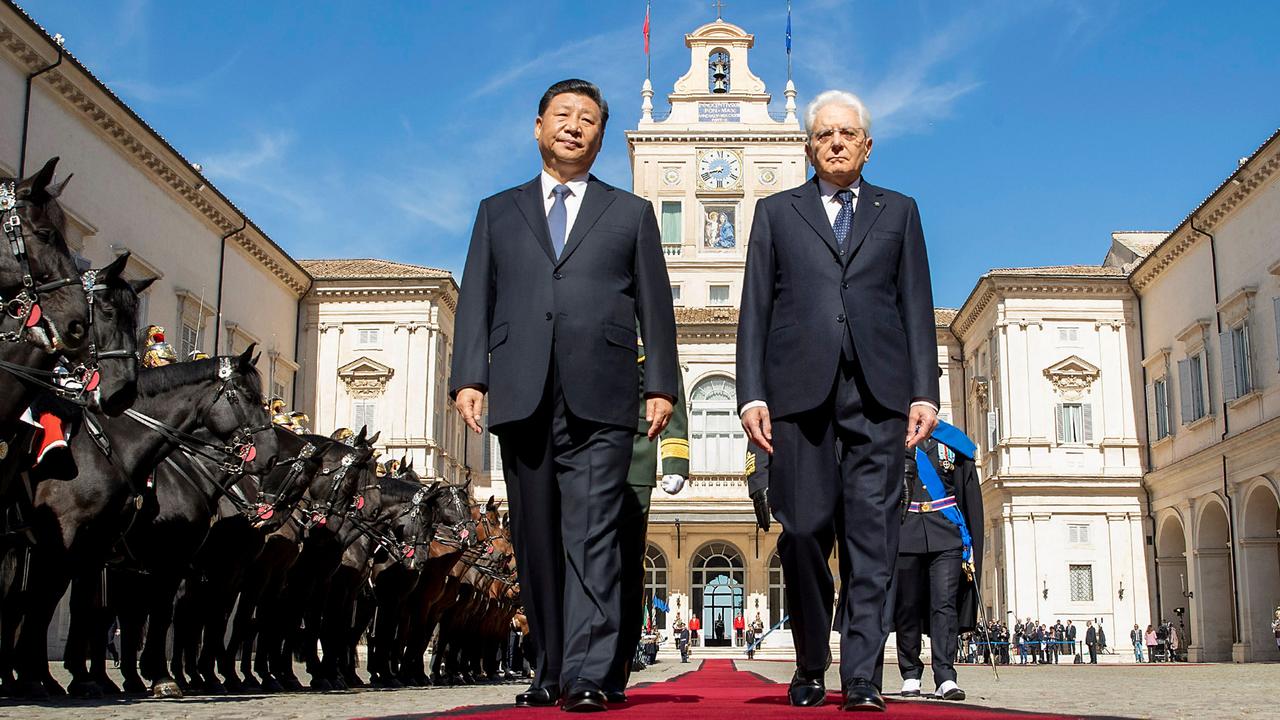What’s changing in China?
All indications are our economic ties remain robust, but it helps to understand the policy shifts happening under Xi Jinping.
First, the good news. Chinese tourist numbers flying into Australia for this year’s spring festival — Chinese New Year — were up a thumping 20 per cent on 2017.
Chinese student numbers enrolled in Australian institutions this year are up 7 per cent. Although the growth rate is below the previous year, such a rise is still substantial given that it’s an increasingly mature market.
These are indicators that the economic relationship remains robust. For they are the sectors that might be especially vulnerable to policy shifts in Beijing.
The comprehensive strategic dialogue the countries hold involves annual meetings of prime ministers and other key ministers, which, following Premier Li Keqiang’s visit to Australia last year, are due to take place in China in 2018.
These should help stabilise issues between the governments. The visits are likely to go ahead from May onwards. The Chinese team will be much the same, even after the massive restructuring of government under way in Beijing.
What, then, of the economy with which Australia continues to engage on a massive scale — though still not through investing in China itself to any significant extent? The Guanghua School of Management at Peking University, one of the country’s top business schools, yesterday previewed the economic year ahead, at a seminar in Beijing.
The three top priorities, or “contradictions” that need resolving and outlined at the NPC are: alleviation of poverty, cleaning up air pollution and addressing systemic risk in the finance sector. The Guanghua dean, Liu Qiao, underlines the challenge that lies ahead in shifting the focus from development to high quality growth. Almost $4 trillion financing has in recent times driven just $1.5 trillion growth, he says, a dismal return in productivity terms.
After 40 years’ rapid growth, the efficiency of Chinese capital is not high, he says. And a long-lamented institutional weakness remains in that the Chinese system can’t yet price risk properly. The party has continued to believe that only it can do so — and thus remains reluctant to let the market do its job, generating “huge opportunities for arbitrage”.
Liu says that, underlying the inefficiency of the structure, state- owned enterprises on average enjoy lower interest rates on loans than private companies, even though the SOEs are less efficient — leading to an allocation of resources that doesn’t foster the new aim of high-quality development.
The latter requires “new breeds of Chinese companies” with strong entrepreneurship and research & development, that can provide a better return on invested capital. “What we need is not more finance but better finance.”
For the government side, Liu urged the introduction of balance sheets and market-based evaluations for local governments and their trillions of dollars’ worth of financing vehicles and other firms, with officials offered incentives for balanced development.
Zhang Shaogang, director of international trade at the Commerce Ministry, cites the massive value to China –of its 15 free-trade agreements. Growth with those economies — including Australia — is expanding at six times the rate with non-FTA-partners, he says.
Guanghua finance professor Li Jin says a large amount of all private sector wealth is still held in bank deposits, which may not even provide a positive return as the consumer price index climbs this year towards 3 per cent. Real estate is where the action is, realising an average 10 per cent per year growth for the last decade, with “very low downside risk”.
ANZ researchers Betty Wang and Kaushik Baidya say in a note that housing prices could tolerate a 50 per cent slump — if not more — without running into negative equity.
Li questions whether the present rate of real estate growth could be sustained, and ANZ agrees, anticipating that “the fundraising capabilities of real estate developers will likely deteriorate in 2018 due to a potential slowdown in building sales, tighter financial regulations and central banks’ tightening bias”.
Li is concerned about the propensity towards “trading on gossip, and herd mentality”, the rapid flows of assets from one class to another “often triggered by little in the way of news”, and the continuing waves of Ponzi schemes — often attracting savings of the poor.
Capital is too often accumulating, he says, rather than “flowing in to the growth of the real economy”. He wants to see “direct financing” encouraged, especially as equity.
Guanghua professor of applied economics Yan Se says that in an attempt to foster such change, the government is seeking to trade off lower growth — targeting 6.5 per cent in 2018, from 6.9 per cent in 2017 — for higher quality development. He forecasts the announcement of a property tax in 2020, and its full introduction in 2022.
The global economy is set to keep recovering this year, though the spectre of a trade war looms. Yan expects China to fight such a war with retaliatory tariffs in the first instance, with foreign exchange depreciation only a last resort. The People’s Bank of China, under its new governor Yi Gang, will rely more this year on interest rate tools, Yan says, reducing its reliance on quantitative measures via M2 money supply.
He forecasts the PBOC to strengthen the yuan against the US dollar slightly, to about 6.55 yuan from 6.33 yesterday, and to raise the benchmark saving interest rate by 20 basis points by the end of the year.
So, no seriously bad news in prospect for the Chinese economy. But in what Xi Jinping calls China’s New Era, it is more important than ever to pay close attention to what’s changing on the ground — and what isn’t.




To join the conversation, please log in. Don't have an account? Register
Join the conversation, you are commenting as Logout